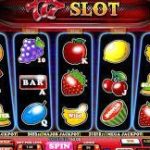Enhancing Hand Reading Skills: Insights from the Red Chippers Exercise
Recently, I introduced a single-hand exercise for Red Chippers to improve their hand reading skills. This exercise is particularly valuable as it reflects common scenarios in live games. After analyzing player responses and the data collected, I identified five significant insights that can benefit every live player. Given the focus on hand reading and understanding opponents’ betting/checking frequencies, let’s delve deeper into the preflop ranges assigned by players.pesowin
Preflop Range Analysis
In our scenario, players were tasked with evaluating the range of hands a “boring TAG” might raise from the small blind after multiple limpers. Responses varied widely: the tightest range identified was KK+, while the broadest included A2+, K5+, Q7+, TJ, and 22+. This range spectrum spanned from a mere 1% to 40% of hands. The average preflop raising range was calculated at approximately 7.8%, equating to hands like 88+/AJ+/KQ.pesowin
POINT #1: Understanding %-Form
A noteworthy observation is that at least 25% of participants were unfamiliar with translating their assigned ranges into %-form. This is crucial, especially when considering the implications for postflop play. For example, if you assign a range of TT+/AK and estimate it as 20%, use tools like Equilab to verify your accuracy. A strong grasp of %-form ensures that you can better interpret your opponents’ actions in future hands, which is vital for effective hand reading.pesowin
POINT #2: Analyzing the Continuation Bet (CB) Frequency
Moving into postflop dynamics, players estimated that the small blind would continuation bet (CB) approximately 51% of the time. This percentage might have been even higher in a single-handed scenario. However, upon examining the ranges assigned, it became evident that many players believed the small blind would have a depolarized CB range. Few included KQ in their CB strategy, resulting in a strong range primarily made up of top pairs and strong holdings like 88-KK.pesowin

POINT #3: The Implications of a CB Check
The check from the small blind can tell us much about their range. Since many players thought the villain would CB 100% of their top pairs and sets, a check could indicate a holding like KQ or lower pairs that aren’t favorable against an Ace-heavy board. This insight can shape our strategic responses. If the small blind checks, considering how to exploit that information becomes critical, especially if they lack strong top pairs.pesowin
POINT #4: Turn Tightness and Its Consequences
When analyzing the turn, players assigned a modest 44% double-barrel range, indicating a strong selection of hands. This tight turn betting range suggested that many players would only bet a small fraction of their top pairs, potentially missing opportunities to extract value from weaker hands. The tendency to assign such a narrow range can lead to overly conservative play and missed opportunities for value betting.pesowin
POINT #5: Adding Hands Incorrectly to Ranges
Another significant finding was that many players included hands in their postflop ranges that were never part of their preflop ranges. This critical error in hand reading can severely distort your understanding of an opponent’s potential holdings. For instance, if the small blind wouldn’t raise with A5s or 65s preflop, those hands shouldn’t be considered for two pair scenarios on the river. Maintaining accuracy in hand ranges as the action progresses is essential for effective strategy formulation.pesowin
POINT #6: River Decision-Making
In the final stages of the exercise, when asked whether to check behind, bet ₱14,452.63, or go all-in when checked to, a striking 74% of players chose to check behind. This conservative approach is understandable given the strong average checking range assigned. However, players should also consider their own ranges. Holding A4s means you have a range that can include A2s-A9s, 22, 66, and missed flush draws. Properly assessing your range relative to the opponent’s can lead to more informed decisions.pesowin
POINT #7: The Importance of Betting Frequency
Despite the strong checking range of the small blind, many players defaulted to checking behind on the river. While this is a sound strategy in theory, it overlooks the broader context of range dynamics. Analyzing both your own range and the opponent’s allows for strategic betting, which can maximize expected value in these situations. Understanding Game Theory Optimal (GTO) principles can guide you toward making more effective decisions at the river.pesowin
POINT #8: Practice Makes Perfect
The exercise served as an excellent opportunity to practice hand reading skills. By analyzing average responses at each decision point, players can reassess their assumptions about range assignments. It’s essential to practice translating postflop frequencies into real ranges and understand how to respond to various actions effectively. Regularly engaging with scenarios like this can help identify leaks in opponents’ strategies, enhancing overall play quality.pesowin
Final Thoughts
For those looking to further refine their skills, consider exploring resources such as the Hand Reading Workbook. It contains 40 exercises designed to help you analyze your own and your opponent’s ranges. By completing just one exercise a day, you can significantly improve your hand reading abilities and elevate your overall game. Remember, understanding ranges deeply is key to becoming a successful player, so keep practicing and applying these insights to your live game strategies, and you’ll likely see improvements in your decision-making. Good luck, and may your skills flourish!pesowin




